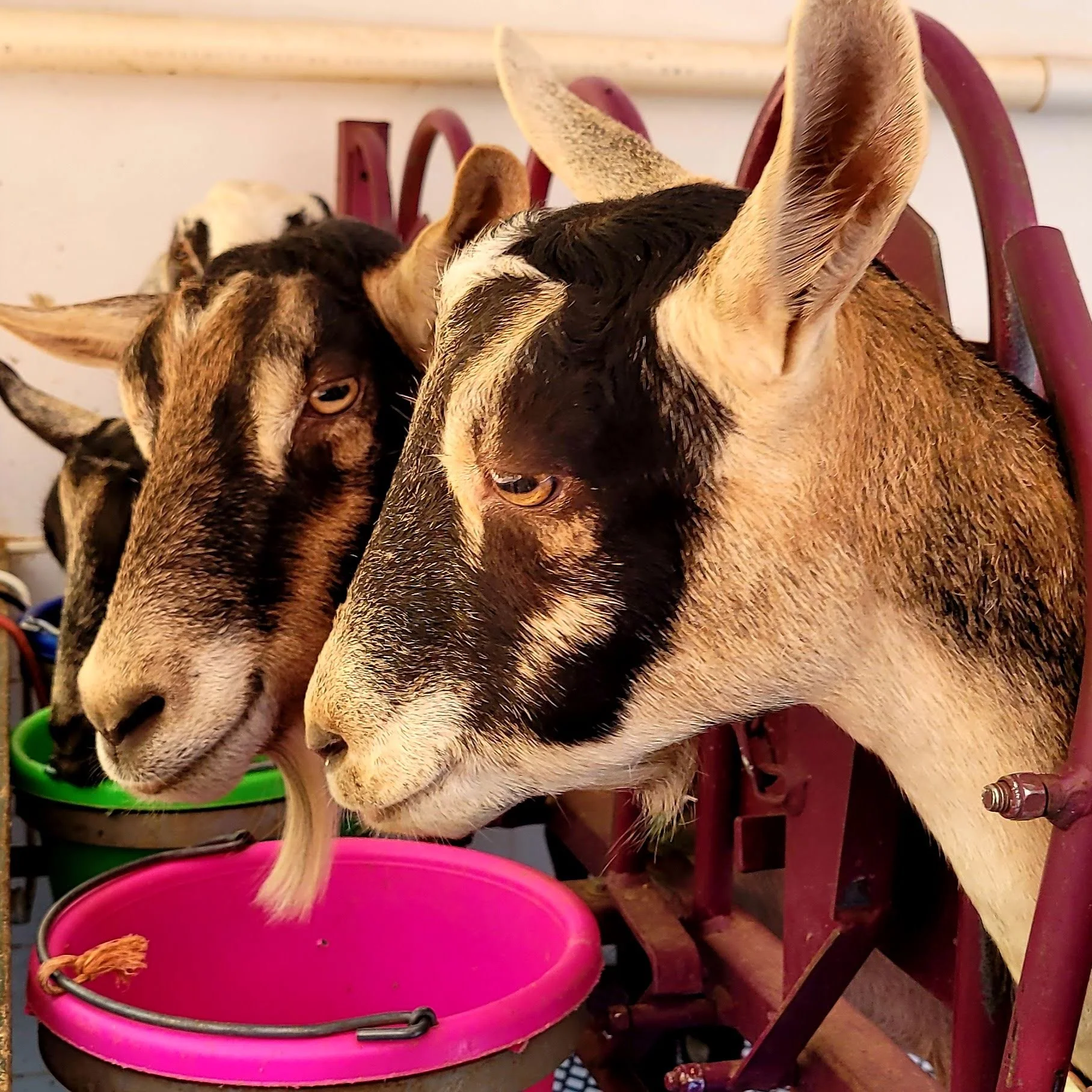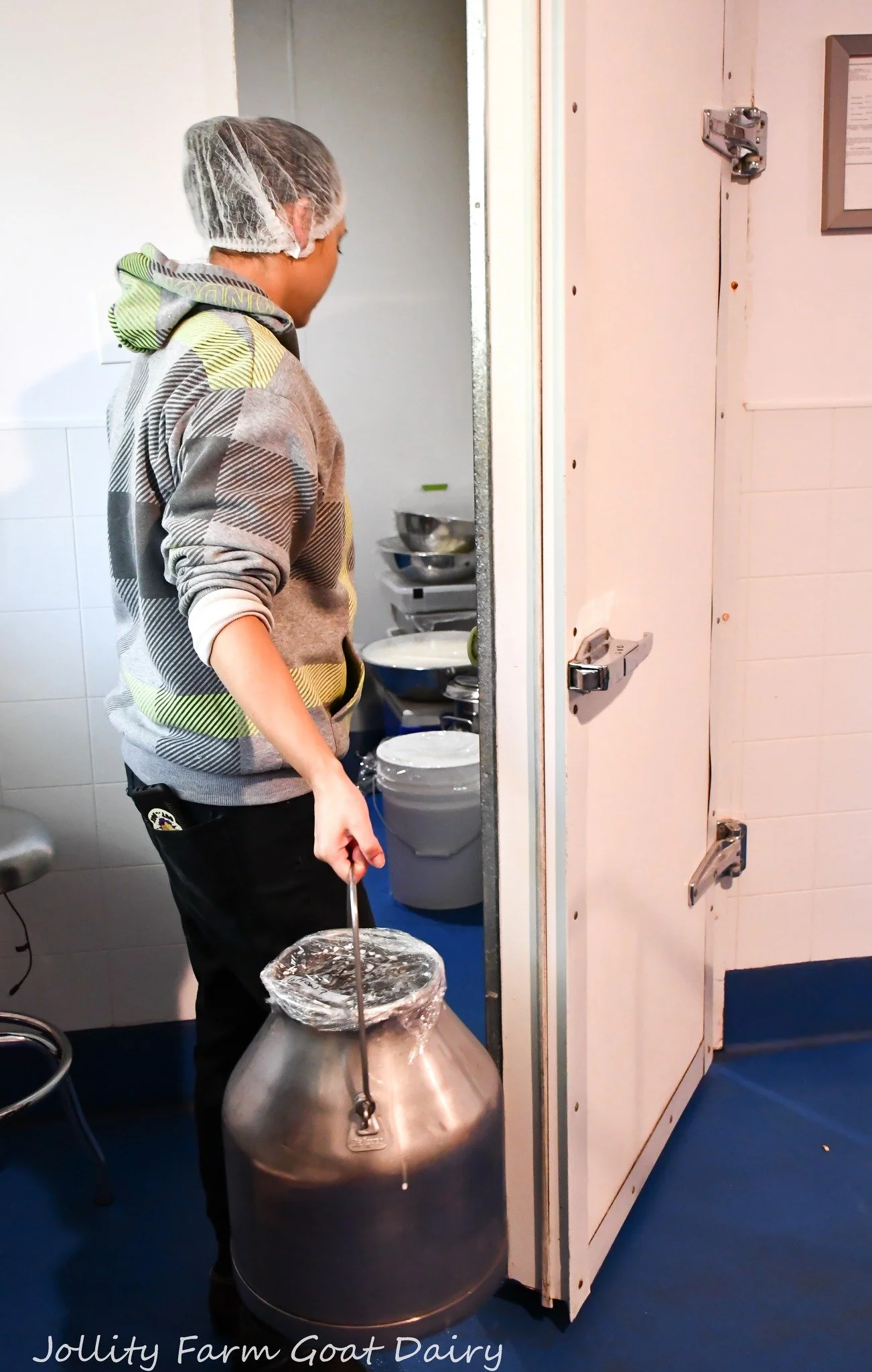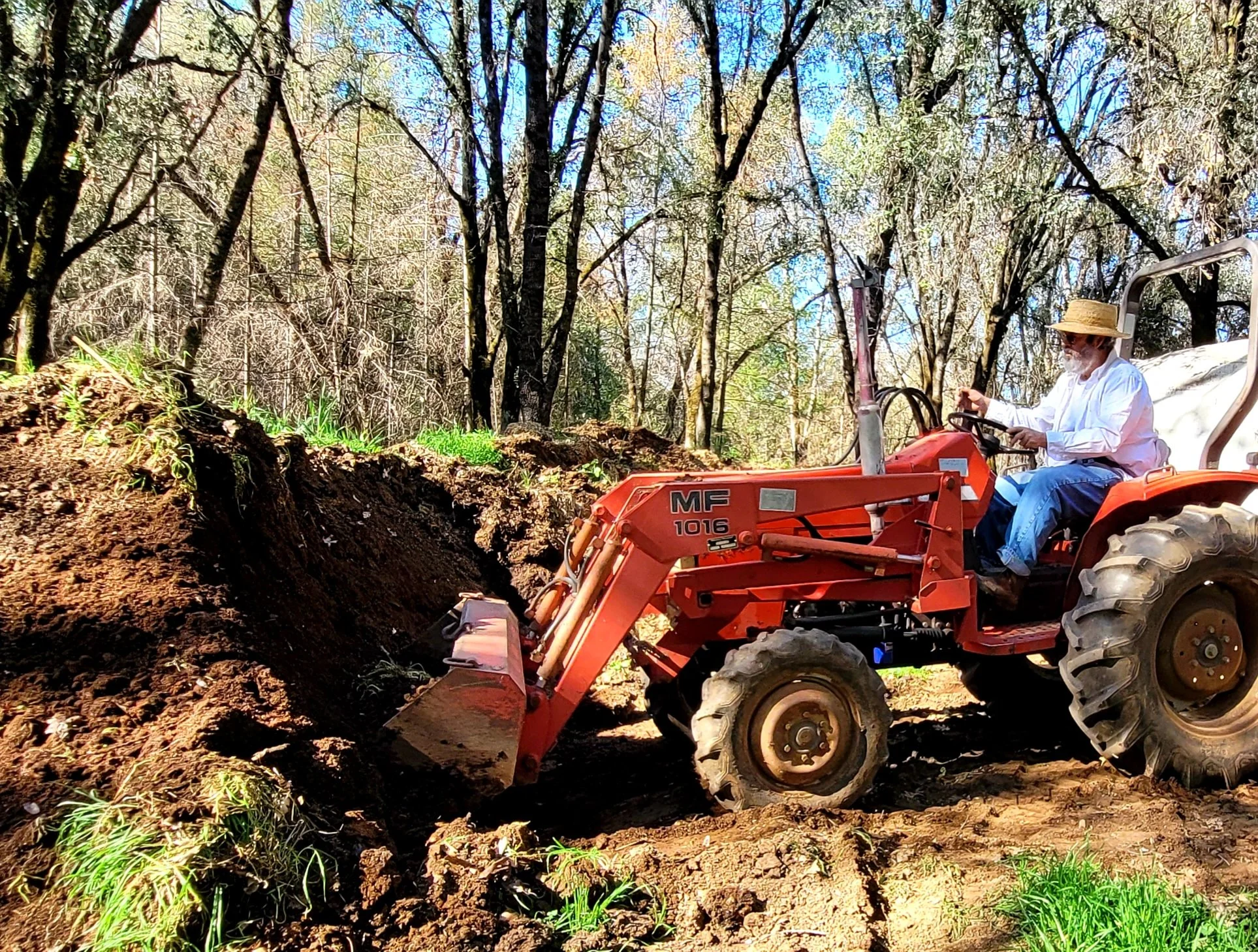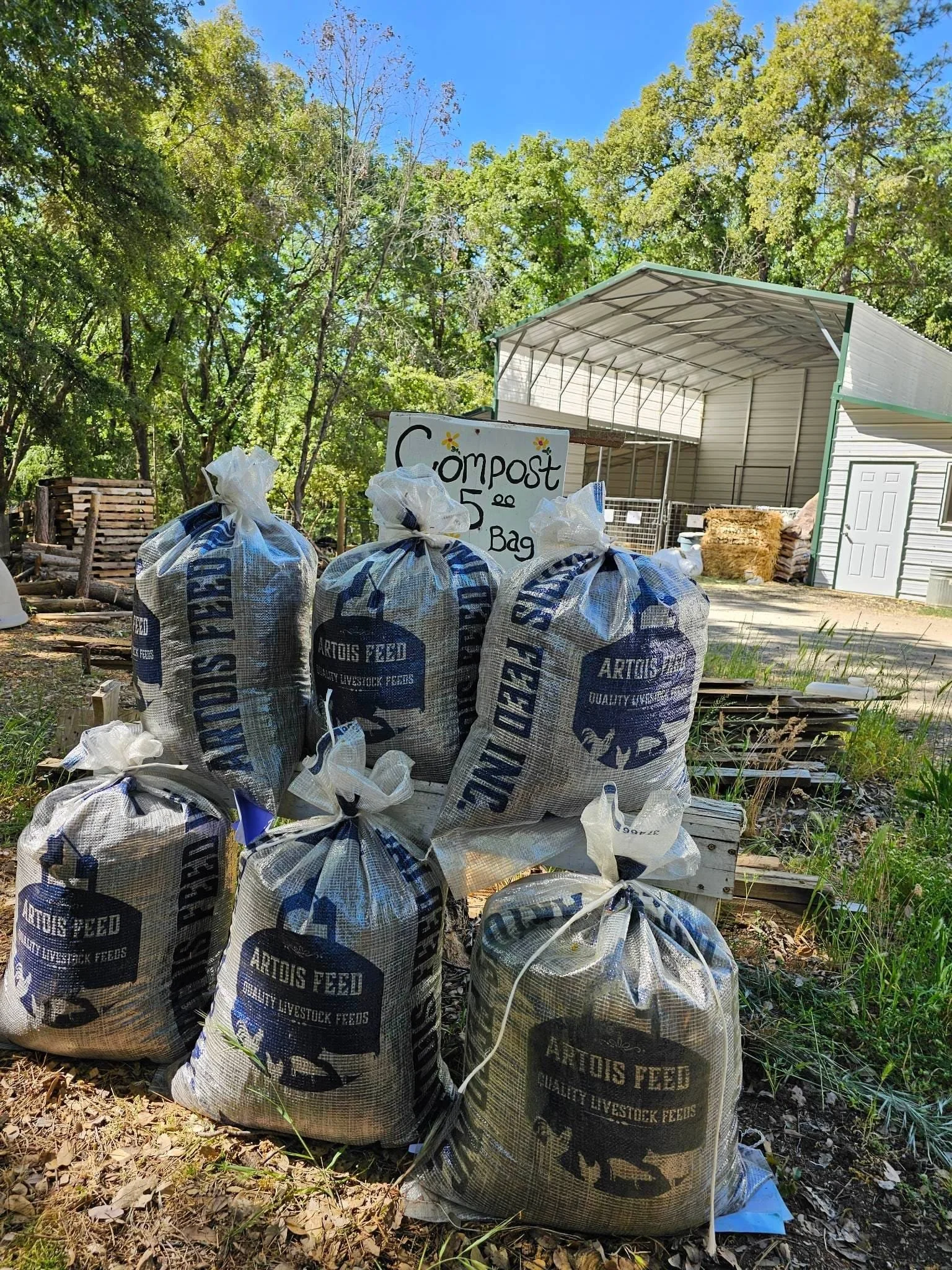The Jollity Farm Way
We are the first to admit, we don’t operate like most commercial dairies.
our goats all have names, not numbers.
we try to let our goats be goats
our goats go out to browse in the forest every day. You can see them meandering throughout the wooded pastures to get their exercise and naturally forage.
We have way too many “retirees.” These girls have given us a lifetime of milk and kids, and we think they deserve a fine retirement. They hang out in the pasture to the right as you drive in our gates. We lovingly call this Garden Valley Manor ~ Retirement Home for Old Goats. Stop by and say hello when you visit the farm. The Old Gals love treats and attention!This is certainly not the best business practice, as these Old Gals cost us time & money. It hurts our profits, but it is how we chose to do business.
We are open to the public!
We sell our cheese within about 50 miles of where it is produced: truly farm to fork
When you chose to purchase our products, you are deciding to support the way we practice farming. Thank you.





Both a Goat Farm and a Licensed Creamery
What does “farmstead” really mean? That the milk is collected on the same farm where the products are produced. So we are both a farm and a creamery.
Because we are a dairy farm, much of the facilities where constructed under the guidelines for Market Milk Dairy Farms and are inspected by the California Department of Food and Ag.
But the rest of the farm is all about working with nature as we produce delicious food for our local community. The first thing you will see as you pull in the driveway is the “Garden of the Goats”.
We grow lots of things for the goats to eat! Pumpkins, Sunflowers, and Comfrey are the largest harvests every year.
We also grow habanero peppers and garlic that may find its way into your favorite cheese :)
Then there are lots of flowers, just cuz we like them, but really to attract bees. Tomatoes, because who wants to eat store bought tomatoes? And they go great with both chevre and feta!
We do not use any other sprays or fertilizers in the garden. We have a huge compost pile that the goats are constantly replenishing for us. So we feed the goats and the goats feed the garden and the garden feeds the goats.
Yes, we do sell our garden gold compost. In the spring we often have it bagged up for you. Other times of the year, you can contact us to make arrangements for pick up.
The Dairy Department
Milking Parlor and Milk Processing Room
-

Goats on the Milk Stand
The goats come in to the milking parlor eager to get their treats and get milked. Each girl has her own bucket….but sometimes they try to “share” their neighbors breakfast.
-

Milking Bucket & Pulsator
We do not use a pipeline system to handle the milk. We use a bucket system that holds five gallons at a time.
-

"Machine Milking"
Our milking stand holds four goats, so we bring four in to the milking parlor at one time. However, we only actually hook up two goats at a time to the inflations. While technically this is machine milking not hand milking, it is still super labor intensive.
-

Hand stripping
After each goat has been milked out with the machine, we hand strip each one to ensure that the udder is empty.
-

The Pour
When the milk bucket is “full” we take it in to the milk processing room. In there we have a sink full of ice water, a stainless steel can, and a filter. The 5 gallon bucket gets lifted up and gently poured through the filter in to the can. Once it is cooled it goes in to the Cheese Room (where the magic happens).
-

Cooled milk goes to the Cheese Room
Once the milk is cooled, the can gets lifted out of the sink, on to a cart, and wheeeled over to the cheese make room. There it is placed in the walk in cooler until it gets made into cheese.
Cheese Room
(where the Magic Happens)
-

Loading the Pastuerizer
No pumps involved here, just muscle. Milk gets carefully poured in to the pasteurizer to start the cheese making process.
-

Lots of recording
During the process, we have thermometers and chart recorders for the product and the air space above the product. All this and more have to be signed off by a person who is licensed to by the CDFA.
-

Handled with care
Once the Magic happens, the curds are ladled by hand in to sterilized cheese clothes.
-

Mixing
Chevre is mixed with just kosher salt for plain chevre. . We use fresh pressed garlic and dried dill for the Garlic dill. Pictured here is pureed fresh habanero peppers ready to be mixed in to the Habanero Chevre.
-

Aged Cheeses
Both pasteurized and raw milk cheeses are matured and cared for in our aging “cave” , a small room next .to the walk in cooler.
-

That's a Wrap
Each block of cheese is cut by hand. We must of course taste it to make sure it is ready to sell…lots of tasting is important :) Then each piece is weighed wrapped and labeled.
Soft cheeses are packed by hand into deli containers, weighed and labeled.








